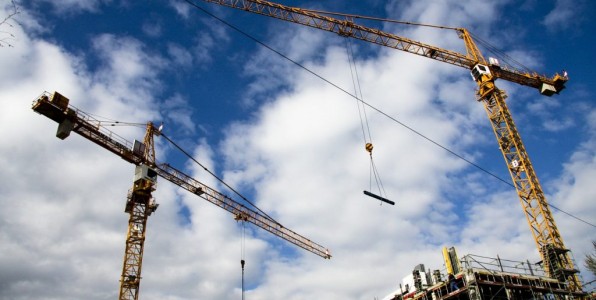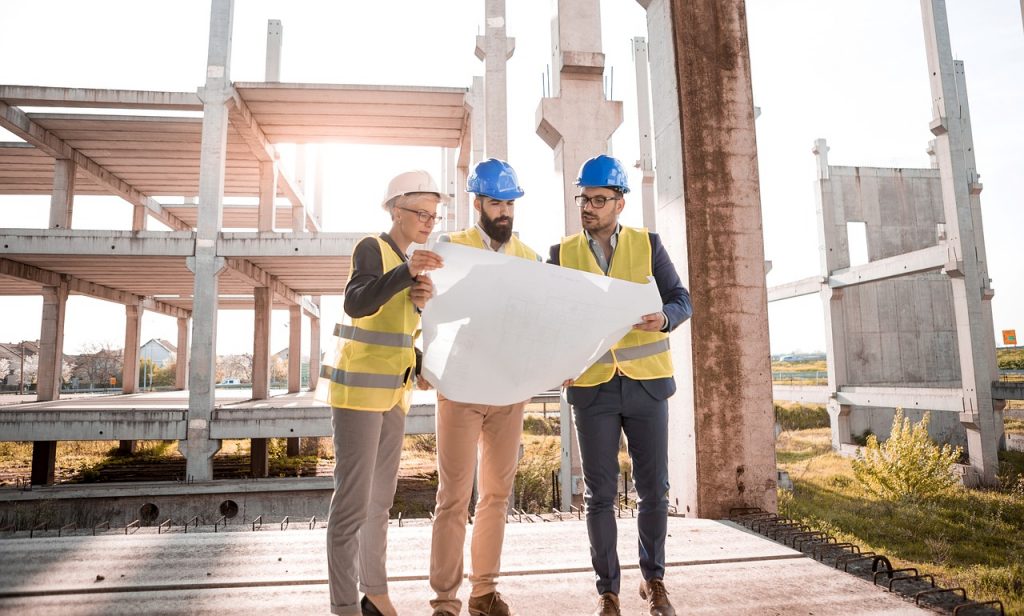Tips to Improve Construction Site Safety

Tips to Improve Construction Site Safety
Construction projects can be a chaotic mess
full of bureaucratic problems and lots of stalling. Managing a construction
site can be an especially stressful ordeal. No matter what’s going on behind
the scenes, safety should remain the number one priority. The machinery you use
is heavy enough that it warrants caution. It’s estimated that about every ten
thousandth hour of crane usage results in injury. Working with cranes is
dangerous work and that is why there are a whole bunch of measures that exist
to prevent worker injuries. Here are some examples.

1. Improve awareness
Before stepping onto the construction site,
every single worker has to know the possible hazards that await them. Ignorance
is the most dangerous attribute you can have in such a dangerous environment.
Understanding the risks involved will make the workers more careful when they
do their jobs. Alertness is the best way to prevent any potential man-made
accidents.
You should go over the OSHA Safety Check
List with your employees every once in a while. Every job on the construction
site has some level of danger attached to it, which is why every worker should
be aware of what they’re getting themselves into. This goes double for any work
that is done with a crane. It’s the job of the construction manager to inform
operators on where they should be taking a heavy load. It’s especially
important to point out where cranes and their loads are located at any given
time.
There are dozens of preventable deaths per
year due to material detaching from the crane. Workers also often disregard the
dangers of things falling on top of them. It would be best to filter out those
who don’t follow safety protocols as they can be liabilities in the event of
something going wrong.
2. Communication is key
Proper communication is something that is criminally underrated on construction sites.
Accidents don’t just happen spontaneously. They are usually the result of some
form of miscommunication or misunderstanding. If daily goals and activities
aren’t discussed together, it could lead to some clashing while work is being
done. If different teams are doing different jobs that involve dangerous equipment,
it would be wise of them to communicate their movements to each other.
Having a briefing at the start of the day
would do wonders for construction site safety. Communicate your goals to your
crane operators and workers on the ground and make sure they don’t get in the
way of each other. During the work day, communication should continue in the
form of walkie talkies or headsets. Sudden changes in the weather can spell
trouble for anyone working near a crane. It’s crucial that you’re able to tell
them to find cover in case the wind speed changes. Cranes can safely function
in normal weather conditions, but wind speeds above twenty-two miles per hour
could lead to the load being dropped.
With these channels of communication, you
can always be sure where every worker is located and if they’re in the path of
a dangerous piece of equipment. Being able to tell someone to watch their back
or move from somewhere is an invaluable part of worksite safety.

3. Have the right tools for the job
There’s only so much you can do with the
tools that you are given. Even an expert artisan depends on the equipment he’s
working with. Safety protocols don’t just apply to the people on the work site,
they also apply to all the different kinds of equipment they work with. Using
the wrong kind of equipment for the job will inevitably lead to injuries on the
job site. Many construction companies work with outdated machinery and cranes
that have quite a bit of wear and tear on them. Experts like Advance cranes recommend replacing
older cranes with more up-to-date equipment that will reduce the chances of a
critical failure.
Safety is of the utmost importance on any
construction site, which is getting your workers the most state of the art gear
is crucial. Nobody should step foot on a construction site without a helmet on
their head. If there’s welding involved, you don’t want your worker to have
blisters and eye damage. Get them protective gloves and eye-wear to prevent
this. Fewer injuries mean fewer lawsuits and that makes these changes worth the
money.
4. Documentation is crucial
Writing everything down might be a chore,
but it’s one of the most important jobs on the construction site. Everything that is done on the job has to be
documented for various reasons. In order to begin building, construction
companies need to jump through quite a few legal hoops and getting things in
writing is one of them. Supervisors have to make sure all the necessary permits
and licenses are in order so that work can continue.
When it comes to safety, documentation can
save you from a heap of legal trouble. Newer hires might try to speed things up
a bit by adding more weight to a crane than is recommended. The average crane
can only lift about eighteen tonnes at a time. If you document exactly how much
weight was approved for movement, you’ll know where the blame lies if changes
are made. In the event of an injury where the worker was doing something they
weren’t allowed to, you could be liable if you don’t have proof of otherwise.
The paperwork is
mostly used to protect the construction company and managers from being sued by
various sources. Workers won’t want to work for you if you don’t take employee safety seriously. Having
written proof of everything done on the site helps you and your workers know
that everything is being done by the books.
Conclusion
Preventing injuries on the work site is one
of the most stressful jobs you can have in construction. Not only do you have
to educate each and every single worker, you also have to make sure all the
equipment is up-to-date and ready for use. It can be quite a handful for
construction site managers. One thing is for sure, keeping workers safe is the
most important job and it has to be done right.
Comments are closed